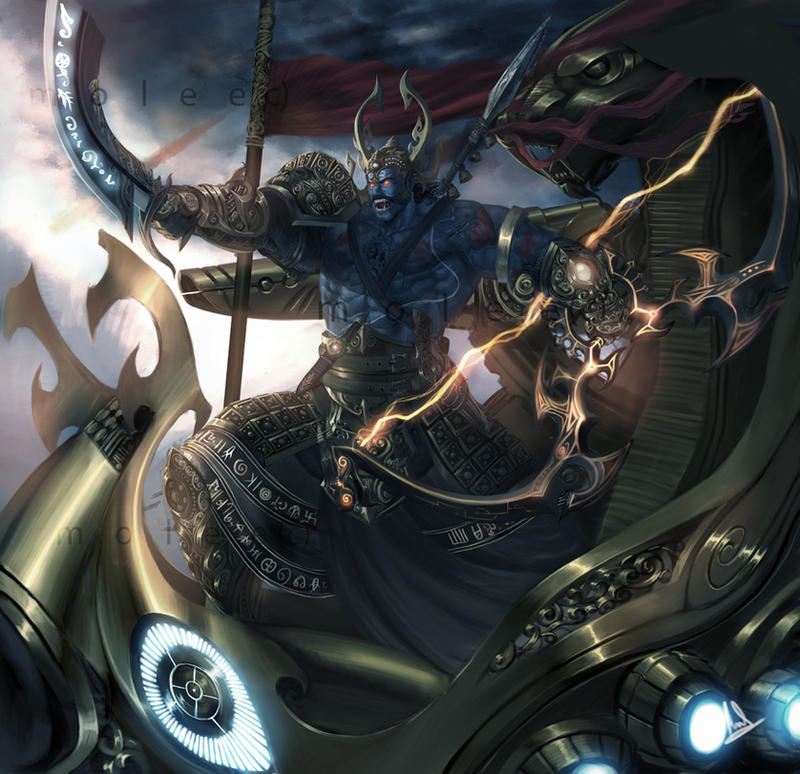The Asuras and the Devas have been in an eternal struggle for power and supremacy in Indian mythology. While the Devas are often depicted as noble and virtuous, the Asuras are portrayed as cunning and deceitful. One of the most famous Asuras in Indian mythology is Ravana, the ten-headed demon king who ruled over Lanka.
Ravana is known for his great strength and intelligence, but also for his deceitful ways. In the epic Ramayana, Ravana abducts Sita, the wife of Lord Rama, in an attempt to defeat him and gain more power. Despite his strength and cunning, Ravana ultimately meets his demise at the hands of Lord Rama and his army of monkeys.
The story of Ravana shows how deceit and greed can lead to one's downfall. It also highlights the importance of courage, love, and devotion to overcome evil. Ravana's arrogance and pride led to his ultimate downfall, despite his immense power and intelligence.
One of the most striking aspects of Ravana's character is his ten heads. According to mythology, each of Ravana's heads represented a different vice or sin, such as lust, anger, and greed. By having ten heads, Ravana symbolizes the many different forms of evil and the challenges that humans face in overcoming them.
The story of Ravana also highlights the role of women in Indian mythology. Sita, the wife of Lord Rama, is a central character in the Ramayana, and her abduction by Ravana sets the stage for the epic battle between the Asuras and the Devas. Sita is known for her beauty, grace, and devotion to her husband, and she serves as a symbol of purity and virtue in Indian mythology.
Overall, the story of Ravana and the Ramayana is a cautionary tale about the dangers of greed and deceit. It teaches us that power, when obtained through deceit and trickery, comes with consequences, and that the virtues of courage, love, and devotion are essential in overcoming evil. By understanding these lessons, we can apply them to our own lives and strive to live with integrity and purpose.

Comments
Post a Comment